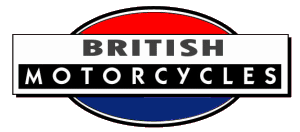


P and S were motorcycles produced at works in Worthing, Sussex, from 1919 to 1921, by Pearson and Sopwith whose showrooms were in London. Reputedly, however, the machines were made by the Monarch firm. Tom Sopwith is best known for his work in the field of aviation. He built the Sopwith Camel.
The firm apparently also built machines under the name of Pearson and Sopwith from 1920 to 1922.
1921 Added that year was a 499cc sv Blackburne model. Sturmey-Archer all-chain transmission, of either two or three speed, became standard throughout.
The make was much like so many others of the post-Great War era and it did not last the course.
Tom Sopwith partnered with Harry Hawker to produce the Hawker motorcycles.

The 2½ h.p. two-stroke P. and S., fitted with Villiers engine and Burman gear box.
THIS is a motor bicycle of which we have had some considerable riding experience but under another name. The machine is now handled by Messrs. Pearson and Sopwith, 60, Mortimer Street, London, W.l, and is a handy, moderate-priced little mount, well equipped and highly suitable for those who prefer a lightweight two-stroke which is capable of going anywhere.
Since our last reference to the machine, it has undergone one or two improvements. The tank is of larger dimensions and now holds 1 1/4 gallons of petrol and a quart of oil, sufficient fuel being carried for 130 miles, which is a great improvement on the previous model, the tank capacity of which was distinctly limited.
The power unit is a 2½ h.p. Villiers, and the gear box is a Burman, provided with a kick-starter.
Formerly, the position of the brake pedal at the rear of the comfortable aluminium footboards caused the rider's heel to come in contact with one of the gear spindles when actuating the brake, causing considerable damage to the boot. This has been overcome by placing the pedal in a more convenient position forward of the footboard, so that it is actuated by the ball of the foot, and the gearshaft having been shortened is no longer in the way. In actual practice, we found the two-speed gear, clutch, and kick-starter to work admirably.
A further improvement lies in the introduction of a chain guard and of a valance to the rear mudguard.
Reverting to the speed gear, the clutch is actuated by a lever on the handle-bars, and very little effort is required to effect its withdrawal.
The machine is well-equipped, has a comfortable Lycett pan saddle. Best and Lloyd drip-feed lubricator, C.A.V. magneto, and either a Brown and Barlow or Amac carburetter. Two-inch tyres on 26in. wheels are supplied.
There is also a simpler and cheaper model equipped with an Albion two-speed gear, but possessing neither clutch nor kick-starter.
The Motor Cycle October 23rd, 1919.
P. AND S. (Stand 38.)
3 h.p. Dalm; 73x76 mm. (318 c.c); single-cylinder two-stroke; hand and drip lubrication; Amac two-lever carburetter; E.I.C. chain-driven magneto; two-speed Burman gear; chain and belt drive; Hutchinson 25x2¼ in. tyres. Price £83 10s.
2¾ h.p. J.A.P. 292 c.c.; single-cylinder four-stroke; other details as above. Price £90.
Pearson and Sopwith, 89, Long Acre, W.G.2.
The two-stroke Dalm-engined P. and S., equipped with Burman two-speed gear, which incorporates a clutch and kick-starter, is a handy little runabout. Mudguarding is well studied, the guards being of generous dimensions for a light-weight. The comfort of the rider has been looked after; and aluminium-covered footboards form part of the equipment. For those who prefer a four-stroke engine, the lightweight P. and S. fitted with a J.A.P. engine should have a special attraction for solo riders. Except for the engine and magneto, it resembles the other model, and is certainly a thoroughly practical little mount. One of the claims of the firm is that, with the Dalm engine model with sidecar attached, the cost of running does not exceed 1d. a mile.
Quite a feature is the 2¾ h.p. Dalm engined sidecar outfit. It is sold complete with two bodies, one for business purposes, for use as a trade carrier, and the other for use as a lightweight touring body, forming a treble-purpose machine as the outfit naturally can be used solo, and, as a sidecar outfit, it can be used either for pleasure or business purposes. Its price is £127. Among the solo machines exhibited may be mentioned a two-speed model fitted with a plain Albion gear box without clutch and kick-starter, which will be sold to the public at £76 10s.
The Motor Cycle, December 2nd, 1920. Page 730
Sources: Graces Guide, The Motor Cycle
If you have further information or a query related to this page, please contact us